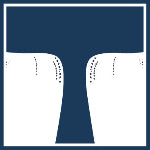When working on the last tooth in the arch, it is important to use specialised instruments. Our last tooth arch clamps are designed to deal with cases specifically fitting that description. Made form high-quality stainless steel with perfect shape memory, they are exactly what you should be reaching for when dealing with challenging restoration cases. This unique collection of clamps consists of:
2AD Clamps
Those fit on premolar teeth, allowing comfortable access to the last tooth as they are intended to be used during its restoration by isolating the operating field. They also extend distally thereby providing rubber dam retraction. Lastly, when using these clamps, it is highly recommended to secure the dam with a liquid dam.
8AD Clamps
These are typically used when working on mandibular molars and have an extended distal bow, which creates enough distal retraction in the rubber dam to allow the placement of a tofflemire/ saddle retainer.
SG Clamps
These are very similar to the 2AD clamps, with the only difference being their extension – which is distal from the molar tooth. They provide great isolation of the operating field, and it is also highly encouraged to secure the dam with a liquid dam when using the SG clamps.
Now that you’ve familiarised yourself with the different types of clamps we offer, here are some more general tips regarding their specific application:
- The design of the 2AD and SG clamps has been created in a way that allows a standard Tor VM ring (or any one similar in shape) to be fixed to the clamp. Those extra added holes are where the rings could be fitted and they are of significant help in improving distal retraction.
- Another way to improve distal retraction is to place the clamp on the opposing tooth (it typically being the maxillary molar). Additionally, this approach improves access to the last tooth in the arch.
Despite our clamps being fairly easy and straightforward to use, there are still some precautions that should be taken into consideration in order to ensure the safety of the user as well as the patient. When operating with a clamp, high-speed opening should be avoided. Additionally, it is important to ensure that the opening is being done outside the patient’s mouth and before placing. Moreover, the clamp should not be opened to a width more than 15mm exceeding tooth width as the undue force may cause premature clamp failure due to metal fatigue. Lastly, in order to avoid clamp swallowing, it should be fixed with floss.
Maintaining sanitized instruments is crucial in sustaining safe and proper dental practices. Hence, one must follow our simple guide to cleaning and sterilizing the clamps:
1) Submerge instruments in cleaning agent solution with neutral pH for 20 min
2) Rinse the instruments thoroughly with purified water for 3-5 min
3) Perform standard moist heat/ steam sterilization procedure following the sterilizer instructions
It is also important to keep in mind that cleaning agents with high percentage of chloride and cleaners containing oxalic acid should not be used under any circumstances. Additionally, instruments should not be kept in liquid medium for more than 3 hours. Both of the previously mentioned malpractices could lead to the premature damaging of the clamps and could affect their ability to function as originally intended.
With the information presented above in mind, you are now fully equipped to use our collection of specialized clamps. All that is left is to pick which one (if not all) is the best suited for your incoming cases.

